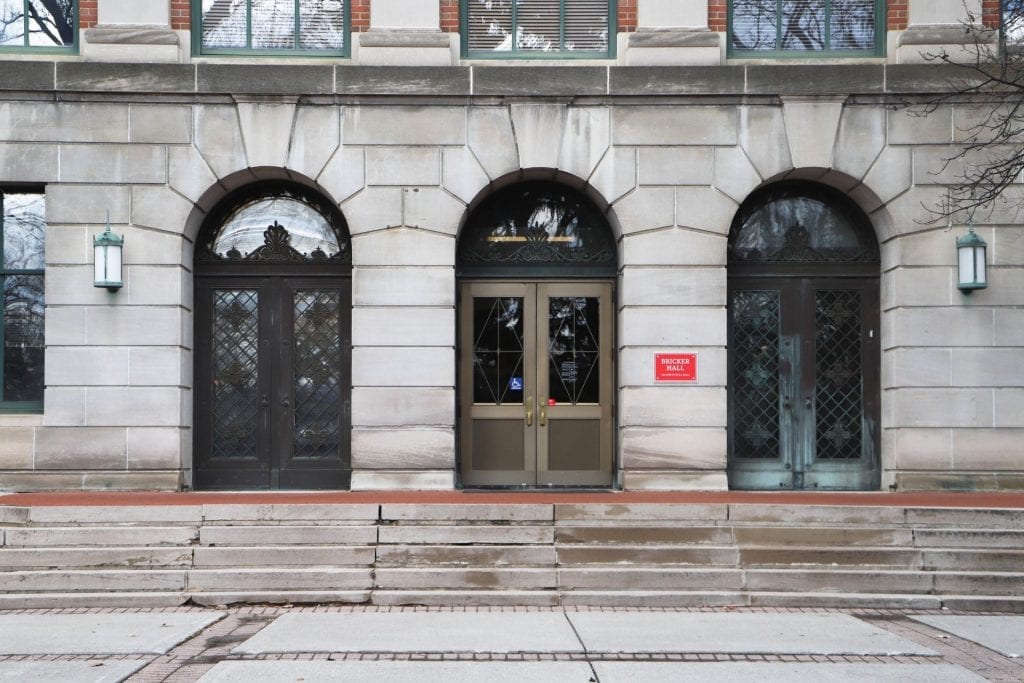
Bricker Hall, the former home of the Office of Academic Affairs and university president, is often a center of protests on campus. In May, the president’s office was moved to the building on the corner of 15th Avenue and High Street. Credit: Lantern File Photo
Whether with a megaphone or handmade sign in hand, students have marched across the Oval and into Bricker Hall looking to share their cause with the public and often, the university president.
Though the president’s office and other high-ranking staff resided in Bricker Hall for nearly a century, when acting university President Peter Mohler took over in August, he settled into an office on the top floor of newly constructed University Square South. With a balcony on the corner of East 15th Avenue and High Street, Mohler now overlooks the same students marching to Bricker.
According to university spokesperson Chris Booker, “The project is part of a long-term vision for the university to connect with the surrounding neighborhood in a more intentional way.”
“It follows decades of planning in conjunction with university and community leaders,” Booker said in an email.
If students attempting to reach the president make their way to University Square South, they’ll be greeted by security, pictures of Jesse Owens and dozens of other Ohio State memories on wooden shelves.
After incoming university President Walter “Ted” Carter Jr. makes his way to the fifth floor come January, he’ll have access to even more of this memorabilia, tucked between staff and a conference room that seats at least 20.
In addition to a new space for leadership and the Office of Academic Affairs, the the colleges of Social Work share the newly opened space in Bricker Hall, according to Booker.
“As the college continues to expand its footprint, we are thrilled to acquire additional offices on campus to accommodate our growing centers, initiatives, accomplished staff and world-class faculty,” David Jenkins, dean of the College of Social Work, said.
This move is a larger part of the university’s Framework 3.0 plan, a road map for construction to achieve university goals that have been updated over the last 13 years. The framework is responsible for areas like the recently opened Theatre, Film and Media Arts District on North Campus and the Pelotonia Cancer Research building on West Campus.


